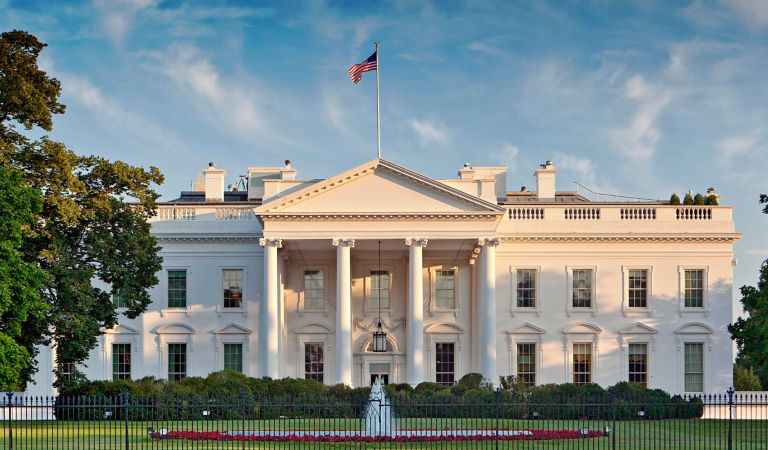This year’s US presidential election will be closely contested, and I expect six key areas of policy debate to impact markets most: the federal deficit, tax and spending shifts, regulatory policy, immigration, trade, and geopolitics. I offer thoughts on each of these topics below but will begin with the bottom line: Investors should work with a much wider range of estimates on bond yields, growth, and inflation prospects for the US and be ready for a more radical shift in the trade and geopolitical landscape. They should also consider the possibility that equity markets may reward different sectors going forward, as earnings potential and valuations are impacted by these shifts.
Why do investors have so much to think about as the election process plays out in the coming months? Just consider the vast policy gulf between the two candidates and the potential economic impact. For example, in a scenario where former President Trump wins and is backed by a Republican-led Congress, I would expect to see lower taxes, higher deficits, higher inflation, higher yields, less regulation, and more isolationist trade and geopolitical policy. Or take the case of a win for President Biden but a still-divided Congress. I would expect that to yield higher taxes for higher income earners, contributing to some deficit reduction, but also a continuation of green energy subsidies that would limit fiscal prudence. And should President Biden win with a Democratic-led Congress, I would expect to see a somewhat higher corporate tax rate, an extension of the child tax credit, efforts to curb health care costs for consumers, and more money for areas such as education, low-income housing, and climate.
Before I get into the details of this policy divergence, let me spend a moment on the election math.
Why it’s likely to be a tight election
The six swing states that will determine the election account for 77 electoral votes, out of a total of 538. They are Wisconsin (10 electoral votes), Michigan (15), Nevada (6), Arizona (11), Pennsylvania (19) and Georgia (16). As of early March, polls showed Trump leading Biden in four of the six states, with the candidates tied in Arizona and Pennsylvania. A seventh possible swing state to watch is North Carolina (16) — it tends to lean Republican but has been known to swing Democratic as it did for Barack Obama in 2008.
To put the importance of the swing states in perspective, while Biden won the 2020 election by 4.5 percentage points (nearly 7 million votes) in the national vote, the combined margin of victory in Wisconsin, Arizona, Pennsylvania, and Georgia was only 126,000 votes.
Looking at the remaining states, the nonpartisan Cook Political Report suggests that the Democrats can likely count on 226 electoral votes and the Republicans on 219 (or 235 if North Carolina leans Republican) on the road to the 270 electoral votes needed to win the presidential election. Given the polarizing nature of the candidates, it is also possible that neither side gets to 270 votes.1
Based on polling, the issues driving voters’ decisions include the economy, immigration, abortion, climate change, democracy and its institutions, foreign policy, and equality. Trump’s focus on illegal immigration and crime are likely to keep his voter base loyal, as are promises of deregulation and lower taxes. On the other hand, the former president’s threats of higher tariffs and a more isolationist US appear to be deterrents for some. Trump’s legal battles could also influence the result, given the role of independents in determining the election (43% of US adults identified as independent in 2023, according to Gallup).
Meanwhile, Biden’s ratings have been poor thanks to high inflation and high interest rates, which have weighed on consumer confidence. But these factors are turning in his favor, which could help the Democrats retain the presidency. In addition, reproductive rights issues brought many Democratic voters to the polls during the 2022 midterm elections and may do so again this year.
Turning to the outlook for Congress, the current split in the Senate is 49 Republicans, 48 Democrats, and 3 Independents (who vote with the Democrats). In this November’s elections, Republicans will be defending 11 seats, and the Democrats and Independents will be defending 23. Gaining just one or two seats (depending on who wins the White House) would give the Republicans control of the Senate, an outcome that many pundits predict — though the margin of control will determine how much they can get done.
Polls suggest that control of the House, currently held by the Republicans, will be a toss-up in the coming election. According to the Cook Political Report, Republicans appeared to have a secure grip on 210 seats and Democrats on 203 seats as of March 5. That left 22 seats that could determine the outcome, with 11 held by Republicans and 11 by Democrats.
As things stand today, there appears to be a greater likelihood of a united government under the Republicans, though the possibility of a united Democratic government cannot be completely excluded given the narrow paths to victory described above.
Key areas of economic and market impact
Let’s turn next to the six policy areas that I think investors should be keeping track of in the coming months.
The federal deficit — For the candidates from both parties, as well as the American public, the size of the federal budget deficit is a low priority. This suggests that fiscal policy is unlikely to tighten meaningfully under either party unless markets (which do care about the deficit) force discipline. That said, a divided Congress would be more likely to limit the ability of either party to maneuver and, therefore, might help to contain the deficit.
Looking ahead, I think it is fair to say that Trump explicitly cares less about the size of the deficit and, as a result, financial markets would demand higher term premia for US bonds if he were to win and have the benefit of a Republican-led Congress. It’s worth noting that the deficit, which currently stands at about 6% of GDP, typically widens by about two percentage points in a recession, suggesting a significant potential vulnerability for the US economy and markets as far as the discount rate is concerned. I expect interest rates to rise in either election outcome, but I would be more concerned about rates if Trump wins.
Tax and spending shifts — The US economy faces a tax cliff at the end of 2025, when Trump’s 2017 tax cuts are set to expire. If no action is taken, this would raise taxes by $400 billion annually, with individual tax rates reverting to the higher 2017 levels, the standard deduction cut in half, the estate tax exemption reduced, and the 20% deduction for pass-through businesses disappearing, among other changes. Trump would like to make the tax cuts permanent (at a cost of $2.7 – $3 trillion over the next 10 years) and lower the corporate tax rate further. Biden would like to hike taxes on those with incomes above $400,000 but keep them low for the remaining taxpayers (at a cost of $1 – $2 trillion over the next 10 years).
This is perhaps the most underrated policy decision the incoming government will face, and the increasing dysfunction in Congress suggests that the compromises that could be required on many tax issues will be difficult to achieve. Ultimately, the extent of any compromises will depend on the makeup of Congress and on the economic situation at the time, with the easiest solution likely being to limit the period for which the taxes are extended.
Another tax issue that will be up for debate in the coming election is the way multinational corporations pay taxes. In particular, will the US enact a global minimum corporate tax, as proposed by Treasury Secretary Janet Yellen, and if not, could other countries end up retaliating? These changes in tax law would have important implications for corporate profit growth in the US, in turn impacting future stock market returns.
On the spending side, Biden’s 2022 Inflation Reduction Act (IRA), which included the largest investment in climate and energy in US history, will, if it is allowed to proceed unchecked, end up costing almost $1 trillion or three times the initial estimate. Trump is of course far less interested in green energy subsidies, so if he wins, we could see subsidies curtailed in both the time period over which they are offered and the breadth of green energy sources that receive them. Electric vehicle tax credits are also likely to be on the chopping block. With 71% of projects announced under the IRA still in the planning stage, it is conceivable that some will be cancelled or delayed until election clarity emerges. Industrial company and green company earnings in the US have received a large boost from these subsidies and under a Biden administration would see a still strong path ahead. However, the runway for subsidies and the breadth of earnings lift could be curtailed under a change in administration.
In terms of other significant spending proposals, Trump has expressed an interest in offering stimulus checks to people, although there are few details about the focus or scale of the plan at this stage. As noted earlier, Biden is likely to support higher spending in areas like education, housing, and climate.
Overall, the two candidates’ stances on taxes and their potentially unsustainable spending plans could add $1 – $5 trillion to the deficit and raise the risk of higher interest rates.
Regulatory policy — While fiscal and tax policy depend on both Congress and the president, the latter has a much bigger say on regulation. For instance, under President Biden, we have seen higher capital requirements for banks, more scrutiny on drug prices, and tougher EPA emissions standards. Trump would be more likely to deregulate industries and reduce what he considers onerous requirements on businesses. (For some context on the cost of doing business in the US, the National Association of Manufacturers recently estimated that the cost of federal regulation for US businesses is over $3 trillion or an average of $277,000 per firm annually, an especially heavy burden for small firms.2) Trump would also like to bring independent regulatory agencies, such as the Federal Communications Commission and the Federal Trade Commission, under presidential authority. These shifts would have a notable impact on regulated sectors of the economy.
To offer one example of where Trump might cut regulatory red tape after taking office, he could reasonably be expected to modify or repeal the EPA’s planned 2027 emissions upgrade. With changes like this (and the possible green energy spending changes noted earlier), a Trump administration would slow the pace of the country’s green energy transition and maintain a somewhat greater reliance on fossil fuels.
Immigration — From an economic standpoint, this is another underappreciated election issue. The cost of dealing with undocumented immigrants is admittedly a challenge for border states, and in some polls, immigration is now the number one issue, surpassing inflation. But the ongoing surge in immigration — which will add some seven million people to the US population by 2026, according to the latest estimates from the Congressional Budget Office — has provided a positive supply-side shock for the economy that has helped reduce wage pressure and contributed to better balance in the labor market. While many immigrants being counted in the labor force today are legal, thanks to a catch-up in the visa backlog, the surge in undocumented immigrants has been a factor. Trump has vowed to enforce border control more effectively but has also promised to deport undocumented workers, which would be a significant negative labor supply shock and would be inflationary.
Trade initiatives — If Trump wins the election, it is widely expected he will raise tariffs, perhaps by as much as 10% across the board and as much as 60% for imports from China. Estimates suggests that a universal baseline tariff could raise $1 trillion over 10 years, which would help fund some of Trump’s tax plans. On the other hand, higher tariffs will add to inflationary pressure and hurt consumer purchasing power.
In other areas of trade, Trump could use the joint review of the United States-Mexico-Canada Agreement (USMCA) scheduled for 2026 to implement shifts in policy relating to Mexico. Relationships with Europe and Japan are also likely to be less cordial than under a Biden administration.
If Biden is reelected, trade policy will likely continue on its current path, with decoupling from China remaining a priority but Europe and Japan considered strong allies.
Geopolitics — The reshaping of the geopolitical map is a given should Trump return to power. Withdrawal from NATO and an increase in defense spending by Europe, the US, and possibly Japan are all potential spillovers. Energy security would be an important policy pillar for a Biden or Trump administration, but would manifest itself differently, from large green energy subsidies and curbs on natural gas exports under Biden to higher fossil fuel production and exports under Trump. Decoupling from China would remain an imperative in either election scenario, but Trump prefers tariffs to subsidies, so the substance of US industrial policy would shift accordingly.




























Monthly Market Review — November 2025
Continue readingBy